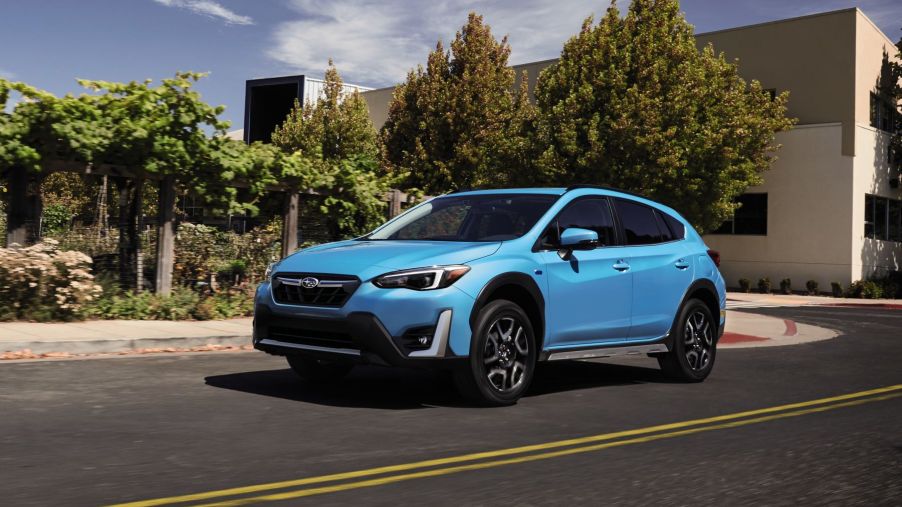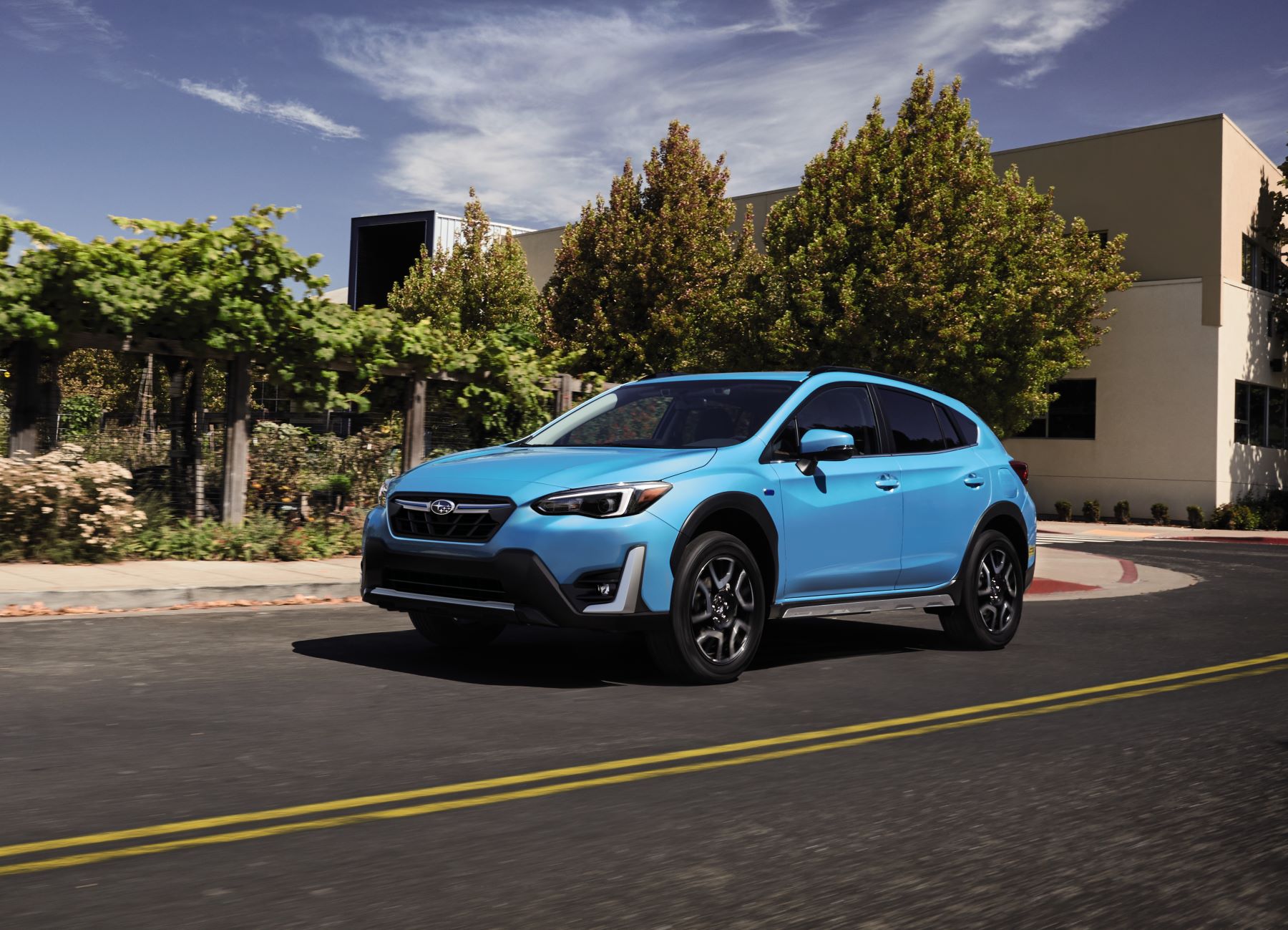
The 2023 Subaru Crosstrek Has 2 Negatives Exclusive to Its Plug-In Hybrid Model
Have you checked out the 2023 Subaru Crosstrek yet? Consumers are pumped about the Crosstrek and its availability as a plug-in hybrid model. Subaru continues to transform toward full electrification, and the 2023 Crosstrek PHEV is just the latest entry in that journey.
This PHEV introduction is chock-full of things to love, with plenty of positives, but there are a few setbacks worth noting. Subaru’s switch to a hybrid powertrain isn’t quite the smooth transition you might expect. There are two significant negatives about the 2023 Subaru Crosstrek you should consider before you buy one for yourself.
1. Weak power, acceleration, and range
You’ll love the idea of a PHEV powertrain married to your beloved Subaru Crosstrek. However, you won’t love the lackluster electric power and acceleration. Consumer Reports indicated that when pushed, the PHEV “drones” and the electric drive’s “whining” is more than annoying. Any moderate or mediocre pressure on the accelerator and your Crosstrek PHEV will kick over to gas.
The base engine for the gas-powered Crosstrek is a 2.0-liter, flat four-cylinder, capable of 152 horsepower and 145 lb-ft of torque, as Edmunds describes. The upgraded 2.5-liter engine will harness 182 horses. Alternatively, Edmunds says the combined output for the Crosstrek PHEV is only 148 hp.
Additionally, this configuration only provides 17 miles of all-electric driving range, which is a dismal metric for this vehicle segment. According to Subaru‘s presser, it delivers a 35 mpg/90 MPGe. A full charge will consume roughly two hours of your day on a Level 2 charging station. Plugging into the standard 110-volt outlet will take five hours to achieve a full charge. Compared to other compact SUVs with PHEV options, the 2023 Crosstrek PHEV isn’t nearly the performer you’d expect.
2. Sacrificing a lot of cargo space

Here’s the second issue you might take with the 2023 Subaru Crosstrek plug-in hybrid. Battery placement isn’t the most intuitive when converting gas-powered models into hybrids and EVs, meaning you’ll have to sacrifice some of your much-needed cargo capacity when opting for the PHEV version of the Crosstrek. Check out the visual of the rear compartment battery location on the Subaru website. It’s occupying an awful lot of grocery space back there.
In the gas-powered Crosstrek, you’ll have 20.8 cubic feet of cargo space, which is about average for this compact SUV segment. When you fold the back seats, you’ll have 55.3 cubic feet. However, for the PHEV version, you’ll only have 15.9 cubic feet of initial cargo space and 43.1 cubic feet with the seats folded. Consumer Reports scored the 2023 Subaru Crosstrek plug-in hybrid very low in the trunk and cargo capacity category, meaning it’s a big enough of a sacrifice that you might be swayed to buy something else.
Other compact SUVs with PHEV options you might like better
If these two negatives are deal-breakers for you as you search for a new compact SUV with PHEV options, plenty of other worthy contenders are on the market in 2023. You might check out the Ford Escape, the Hyundai Santa Fe, or the Mitsubishi Outlander. Additionally, Kia has three entries worth test-driving, including the Kia Niro, the Kia Sorento, and the Kia Sportage, all with plug-in hybrid variations. So, the Subaru Crosstrek PHEV has some steep competition.
Of course, with a Subaru, you have great features like standard AWD and increased ground clearance that you won’t find in other offerings. Additionally, it’s excellent news that the automaker is progressing toward an all-electric power lineup of vehicles. However, the 2023 Crosstrek Hybrid does have its drawbacks. So, if electric power and cargo capacity matter to you, another compact SUV might be the better fit.


